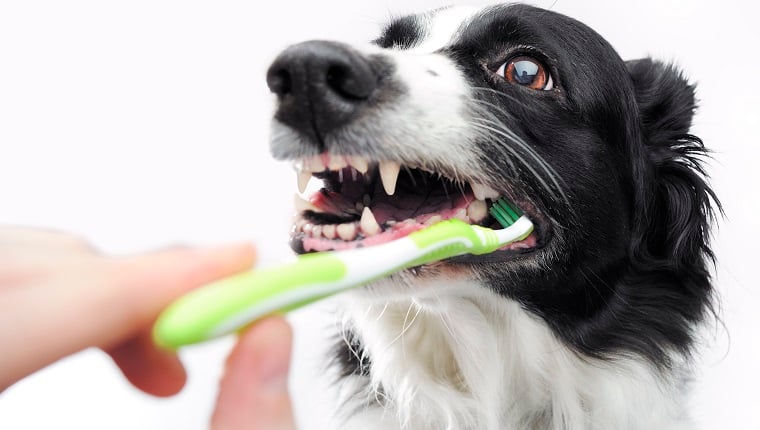Tartar and gingivitis are two of the most common problems veterinarians see in dogs. Poor dental hygiene can lead to gum disease, tooth loss and, if left untreated, to more serious diseases such as bacterial infections of the heart, liver, or kidneys.
In fact, 80% of dogs and 70% of cats show signs of oral and dental disease by the age of three. Gingivitis and tartar can progress to periodontal disease or form an abscess. These infections can spread to your dog’s heart valves, liver, and kidneys. This is serious business.
1. Brush your teeth daily
Brushing your pet’s teeth helps remove plaque and slow down tartar formation. When you first start brushing your teeth, take it step by step and make it an enjoyable experience. Starting with a finger brush, gently touch the dog’s teeth.
When they feel more comfortable with you touching their mouth, move your fingers in a gentle circular motion across their teeth and gums. When they relax, you can finally add pet toothpaste. Do not use human toothpaste.
As your dog gets used to this, you can start using a dog toothbrush as recommended by your veterinarian. Some dog breeds, especially smaller or toy dog breeds, require more brushing than others.
Making it a daily activity will help your dog stay calm throughout the process and maintain good oral health.
Watch the video above for some guidance on brushing your dog’s teeth. Be sure to reward your pet for playing or walking afterwards!
2. Eat and chew properly

What your pet eats can affect their smile. Talk to your veterinarian about developing a diet to keep your dog’s teeth in good condition.
You definitely don’t want to share your sugary human food with your dog. They are not good for you, but especially bad for canines. Table scraps may affect not only your dog’s oral health, but their overall health as well.
Chewing is great for your dog’s dental health, but you need to be careful what you let your dog chew. Certain bones can be dangerous to your pet, not just to their teeth.
For example, raw skin bones can scratch and tear internal organs, making them a suffocation hazard. They are often immersed in chemicals and can also make your dog sick. They should not be used for teeth cleaning purposes.
Cooked bones can also shatter and cause internal damage. Stick to bones recommended by your veterinarian and replace them when they become small enough for your dog to swallow. When your dog isn’t chewing on bones, keep the bones in the refrigerator to prevent bacteria from growing. Always supervise chewing, too.
Some dog parents also use recipes for snacks to improve dental health. Greenies is a popular brand of dog tooth treats, but ask your veterinarian for some recommendations that might work best for your puppy.
Rope toys or other toys your dog uses to play tug-of-war can also help them maintain good tooth shape while giving them a good workout. Make sure any toys you buy are sturdy enough for your dog, and put them away when you’re done playing.
3. Dog dentist visit
Talk to your veterinarian about annual or semi-annual teeth cleaning. Teeth cleaning by a veterinarian is the only way to remove tartar buildup.
Just like you schedule cleaning for your own teeth, be sure to include your pet’s cleaning on your calendar. You can also find low-cost dental cleaning services on the internet.
If your dog is sensitive to anesthesia or you want to avoid side effects, you may want to consider non-anesthesia dental cleaning. Some veterinarians suggest that this type of cleaning will not be as effective in providing the deep cleaning your dog’s mouth needs. You must discuss this with your own veterinarian and find out what works for you and your dog.
Whatever cleaning method you decide to use, professional cleaning is a must. Keep in mind that your dog may feel pain without you even knowing it. Professionals will be able to spot any issues you may have missed.
One thing is for sure, after a good professional cleaning, your puppy’s mouth will become healthier.

